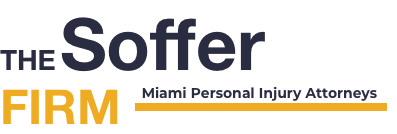Did you know that there were 6,664 bicycle accidents in Florida in 2018? While riding your bicycle is a lot of fun, it can also be dangerous around careless drivers.
As a cyclist, you have a right to the road. Whether your accident was caused by a family car or an Uber driver, no matter the severity of your injuries, you have the same right as any driver: to go on the road without fear.
The first step in any personal injury case is determining the cause of the accident. Here’s a look at some common causes of Florida bicycle accidents—and what you can do next.
Common Bicycle Accident Causes
Why do the causes of bike accidents matter? Without knowing the cause of the accident, you can’t hold the other party accountable.
Just like every criminal case is built on justice for a crime, every personal injury case is built on righting wrongs for an incident. This has to do with the concept of fault. The party who is at fault must pay damages to the injured party, which means that your personal injury claim is built upon proving that the other party was at fault.
Because of this, the causes of bicycle accidents aren’t just an element of your claim—they’re central to your entire argument.
Here are some of the most common causes of Florida bicycle accidents.
Distracted Driving
In 2018, 2,800 people were killed and 400,000 were injured in crashes involving a distracted driver, and 1 in 5 of those who died was not in a vehicle—they were riding their bikes, walking, or outside a vehicle. Distracted driving is all too common, and for bicyclists, it has severe consequences.
Think of it this way.
The minimum amount of time for a driver to look down at their phone for a text is 5 seconds. If the car is traveling at 55 miles an hour, the car travels the length of a football field without the driver looking at the road. For a bicyclist, this is especially dangerous, since a car is bigger and faster and a bicycle does not provide the protective metal shell that a car would provide in a crash.
Keep in mind that any form of distracted driving applies in this category, including texting, answering the phone, talking on the phone, using social media, or even looking down to grab food.
Dooring
Dooring accidents are a type of accident that is uniquely dangerous to cyclists. After all, cyclists almost always suffer severe or even debilitating injuries as a result of dooring accidents.
Dooring is when a driver opens their car door without checking their mirrors to ensure no one is coming. When they do this, it creates a dangerous Catch-22 for cyclists. A cyclist can either crash into the door or be forced into a traffic lane, causing a crash that may be even more dangerous.
Unsafe Lane Changes and Weaving
Legally, drivers and cyclists have to abide by the same set of traffic laws. Sadly, not all drivers got that memo—and they don’t abide by traffic laws around other cars, never mind cyclists. This is incredibly risky around other drivers, but it can be fatal for cyclists.
Because a bicyclist is much smaller than a car, they’re a lot harder to see. The problem is that drivers are more used to looking for other cars than looking for bicycles, which means many drivers may unwittingly skip over a bicyclist if they’re not paying attention.
This problem is worsened by unsafe driving behavior, particularly unsafe lane changes and weaving. Drivers who weave move through traffic so quickly that it’s incredibly difficult to spot a cyclist, and they’re less likely to be able to make evasive maneuvers when they spot a cyclist. Even if a driver isn’t weaving, a single unsafe lane change (such as merging into the cyclist’s lane without looking) can result in a crash.
Turning Without Looking
At an intersection, drivers have an obligation to turn and look for cyclists (and other cars). Again, cyclists are much smaller than cars, so if a driver isn’t paying attention, it’s that much easier for them to overlook a cyclist.
Unfortunately, turning without checking for cyclists is common. It’s also completely avoidable.
Running Red Lights and Failure to Yield
No matter whether you live in Miami or the tiniest Florida beach town, every stoplight, stop sign, and yield sign has the same rules. If someone breaks the rules, they move through traffic out of turn with potentially dangerous consequences for everyone else on the road with them.
This is dangerous enough for other drivers. But for cyclists, it can result in life-threatening and permanent injuries.
Unfortunately, this type of unsafe behavior is dangerous at any intersection, from stoplights to intersections with merging lanes to roundabouts.
Consequences of Bicycle Accidents
In a bicycle accident, physics is not on the cyclist’s side. A car is bigger, faster, and heavier, and unlike another driver, a cyclist doesn’t have a large, heavy metal shell to absorb any of the impact. Because of this, a cyclist faces the risk of significant injury in a car accident.
Some common bicycle accident injuries include:
- Soft tissue injuries
- Concussion
- Traumatic brain injuries
- Broken bones
- Scrapes and cuts
- Internal injuries
- Spinal cord injuries
Many cyclists believe that their injuries are their own fault, especially if they rode without a helmet. Here’s the thing: under Florida law, failure to wear a helmet does not constitute evidence of negligence. The fault remains with the driver who caused the accident.
Get a Bicycle Accident Attorney Who Fights for You
We know that Florida bicycle accidents are incredibly traumatic. We also know that you deserve to have your story told so that you can get your life back on track.
The Soffer Firm is a highly respected law firm in Miami 100% committed to protecting the rights of people who have been hurt. We have extensive experience fighting for bicycle accident victims, and now, we’re here to fight for you.
If you need to speak with an attorney about your case, schedule your free consultation today.

